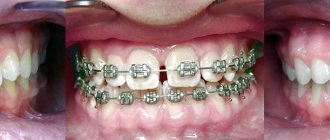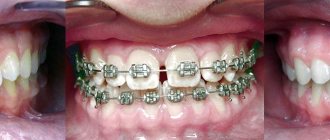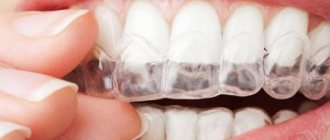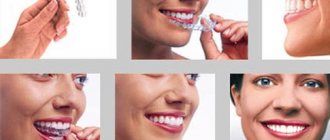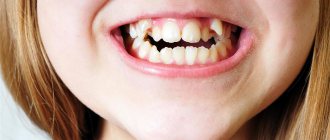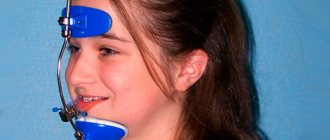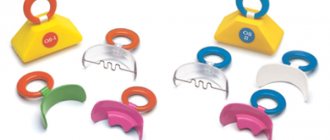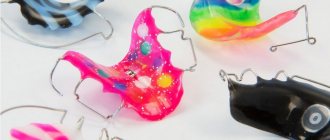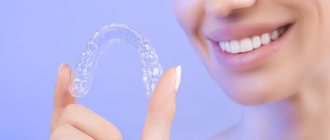Home | How to properly care for your mouth guards
An aligner is a removable orthodontic device, which is made from individual impressions of the patient’s teeth from a flexible material, designed to correct malocclusion.
Aligners are a more aesthetic alternative to traditional braces. They are completely invisible to others, which allows you to undergo treatment in an atmosphere of psychological comfort. With the help of aligners, small defects can be eliminated without resorting to the use of noticeable metal systems.
Aligner care
The mouth guard itself does not require special care, but there are some important points.
So, in order to avoid any deformation of the polymer material, it is necessary not to expose the mouth guard to high temperatures; it is forbidden to use hot water or steaming to disinfect the system. To prevent the proliferation of dangerous pathogenic bacteria, it is recommended to clean the mouthguard with a toothbrush and toothpaste. You can also consult with a specialist, and the orthodontist will definitely tell you what disinfectant can be used when caring for the aligners.
How long are mouth guards worn and how long can they last?
The duration of wearing depends on the purpose for which the mouth guard is made. To consolidate the results of treatment with braces, the onlay is usually worn for one to two years. Orthodontists sometimes recommend lifelong use of a removable retainer. Of course, one mouthguard will not last your entire life. During scheduled visits to the orthodontist, the doctor monitors the condition of the removable retainer and, if necessary, changes it to a new one.
Treatment with aligners lasts, on average, about a year. At the same time, one aligner is not worn all the time; the aligners are constantly (every two to four weeks) replaced with new ones.
For example, a sports mouthguard is used only during sports activities. Its service life depends on the duration and intensity of training. A high-quality design can last one year or even several years. If the load is too intense, the mouthguard should be changed several times a year.
Hygiene benefits of mouthguard treatment
The mouth guard is a non-capricious system, and unlike the braces system, it does not require a diet or serious restrictions in the consumption of any food products due to the fact that the mouth guard is removed during meals.
Also, the patient will not have to purchase and use an irrigator, single-beam brushes, interdental brushes and other quite expensive devices.
Orthodontist Irina Butorina offers her patients the most modern methods of orthodontic treatment. The effectiveness of teeth straightening technology with aligners today is beyond doubt. You can now appreciate its benefits without extra costs. We invite you to undergo an examination and orthodontic treatment with the experienced doctor Irina Butorina.
Our orthodontist Ekaterina Igorevna Elizarova will tell you everything about mouthguards: what they are, why they are needed, how to use and care for them correctly, and why they should be worn after removing braces.
The use of braces involves the correction of fairly serious bite defects. Since the teeth are forced into the desired position, after removing the orthopedic structures, they will tend to return to their original position. Mouthguards are necessary in order to prevent this: failure to wear them is guaranteed to negate the entire effect of the treatment.
Dental aligners are removable orthodontic structures; they are made of a transparent biopolymer material that fits tightly to the teeth. They are practically invisible and do not cause problems when worn. They are hypoallergenic, transparent, almost imperceptible on the teeth and do not injure the oral cavity.
For the first one and a half to two months after removing braces, you will have to wear the mouthguards for a long time - up to 22-24 hours a day, removing them only when eating or brushing your teeth. Then they can be worn only at night and, finally, once every 2-3 weeks. The duration is calculated by the orthodontist individually for each patient and depends on the following factors:
- Difficulty of treatment. The more severe the malocclusion, the longer the aligners will need to be worn.
- Age. The younger the patient, the easier it is to keep the teeth in the desired position and the faster they will finally take it. For minor malocclusions, children sometimes need to wear aligners for only 2-3 hours a day for several months to see improvement, as their maxillofacial apparatus is not yet fully formed and changes easily. Older patients may be forced to use mouth guards throughout their lives to avoid negating the effect of treatment.
— Methods of a specific specialist. Some orthodontists believe that the period of wearing mouth guards should exceed the period of using braces by more than twice. Others are of the opinion that a long period is not necessary to maintain the results.
Important: some patients may wear mouth guards longer than the prescribed period to be on the safe side, but they should not be neglected, otherwise the effect of treatment will be lost.
To avoid damaging the device during use, you must follow the following rules and care for the mouth guard:
-When removing mouthguards, always put them in a special case. It will provide the device with protection from mechanical damage, as well as suitable temperature and ventilation.
-You cannot eat or use chewing gum in mouthguards. —-The same applies to most drinks: without removing the device, you can only drink clean, non-carbonated water at room temperature. -Mouthguards should be protected from temperature changes: they should not be left in direct sunlight, scalded with boiling water, kept near hot surfaces, or stored in the cold. -It is advisable to remove the mouthguards while smoking: the material will quickly lose flexibility, become cloudy, and may darken.
Each time after removal, rinse the device with running water. Clean your mouth guard regularly using a toothbrush and toothpaste. Use a special anti-plaque solution, and your mouth guards will last you a long time.
One of the few disadvantages of mouth guards is their high cost.
We always offer our patients an alternative; to maintain the shape of their teeth, we also use other orthodontic devices:
Retainer. It is a non-removable wire structure that is attached to the teeth from the back side. The only inconvenience when using it is the need to visit a dentist for professional cleaning of molars: caries or tartar may form under the wire. Also, retainers cannot be removed or put back on your own if they come off.
Plate. It is created based on a cast of the patient’s jaw. It consists of a plastic base that fits the upper palate and a metal plate that covers the problem teeth. Removable design, the main disadvantage of which is its unaesthetic appearance.
The choice is always yours, and we will always be glad to see your happy smiles. You can make an appointment for a consultation by calling 54-02-02. Your orthodontist is Ekaterina Elizarova
Reviews
Like any other thing, the service life of a mouthguard depends very much on the quality of care. If you happen to wear a sports or orthodontic mouthguard, tell us how you looked after it, how many years did it last?
The comment form is located at the bottom of this page.
If you find an error, please select a piece of text and press Ctrl+Enter.
Tags mouth guards Care
Did you like the article? stay tuned
No comments yet
Mouth guards for correcting bite: what does it feel like?
Aligners are more comfortable than braces - many patients have already convinced themselves of this. However, aligners, like any other orthodontic structure, are a foreign body in the oral cavity that can cause minor discomfort. Patients identify the following problems:
- feeling of a foreign body in the mouth,
- a feeling that the jaws are not closing if the aligners are fixed on the dentition of both jaws,
- a slight violation of diction, because the tongue has to get used to the new position - after all, mouth guards, although slightly, increase the size of the teeth,
- pain in the tongue: he has to adapt to a new position, so he may get tired, because he will be under constant tension,
- minor toothaches, especially in the first days after installing each new aligner, as it puts a lot of pressure on the teeth at the beginning of treatment,
- increased salivation,
- At the end of their wearing period, mouth guards may not have a very good fixation - this can be solved by installing attachments or clasps made of composite materials, which are fixed on the outermost teeth located outside the smile zone. That is, they will be invisible.
Manufacturing process and treatment features
First of all, the patient goes for a personal consultation with his doctor. He must also undergo a complete sanitation of the oral cavity, heal all existing carious cavities and eliminate inflammation.
Only after this does the specialist begin making the mouthguard itself:
- An impression is made of the patient's jaw, from which the doctor can recreate a plaster model of the jaw.
- Next, a 3D model of the correct position of the teeth is created, which the doctor will strive for.
- If the patient is satisfied with everything, you can move on to the next stage.
- It is important to know that the course of treatment requires up to 25 drops. All of them have a specific numbering and must be used sequentially one after another.
Capabilities of the mouthguard
The mouth guard will help cope with the following ailments and abnormalities:
- Very large gaps between the teeth or, conversely, excessive crowding in the row.
- Minor malocclusion.
- A noticeably prominent arrangement of one or more teeth relative to others.
- Loss of teeth due to injury and, as a result, malocclusion.
In addition, mouthguards are often used in childhood, when there is improper eruption of the first and molar teeth.
Mouth guards or braces
First of all, it is worth noting that braces systems will cost the patient much less than mouth guards. However, before making a choice, you should consider several points and understand the differences between these two methods.
Braces are made of durable metal or equally durable ceramics, and mouthguards are made of plastic. As a result of wearing braces, soft tissues may be injured, and the enamel may change its shade. Mouthguards are absolutely safe and non-traumatic.
Advantages of the mouth guard:
- The design is removable, which allows you to clean your teeth and the product itself more thoroughly. This reduces the risk of developing caries.
- Custom-made mouthguard simplifies the installation process. Braces made to certain standards are not suitable for everyone.
- Mouthguards are not noticeable to others.
Despite many advantages, mouthguards, unfortunately, cannot cope with very complex pathologies.
Sterilization of the structure
To avoid complications, the structure must be sterilized. This allows you to destroy infections, pathogenic bacteria, fungi and spores that may be on the surface. For cleaning, a professional autoclave is used in a clinical setting. Self-boiling can deform the structure, so its use is not recommended.
For home care, you should immerse the trays in a special solution for five to ten minutes every week. Rinse the device under water or use antiseptics with water (in a ratio of 1:5) for cleaning. The structure must be stored in a special case.
Mouth guards after braces - price
Prices for mouth guards after braces are removed, as well as for other orthodontic services, largely depend on the level of dentistry in Moscow, quality and type. When paying for treatment with a braces system as a set, turnkey, mouthguards are included in the price. This should be discussed in advance during your visit to the orthodontist. If the patient paid for all procedures separately, then the price for mouth guards will be from 5,000 rubles. This is not the most expensive part of treatment with braces.
Retention trays are very convenient for consolidating the success of orthodontic treatment. If the patient fulfills all the doctor’s requirements and wears the device for the required amount of time, the result achieved in the process of correcting the bite will remain forever. Be sure to wear mouthguards after braces - and straight teeth will be a source of pride.
How long to wear mouthguards after braces?
Recommendations on how long to wear mouth guards after braces can only be provided by your attending physician. Typically, the orthodontist develops a plan for how long mouth guards need to be worn after braces, which helps maintain the correct bite and minimizes possible discomfort for the patient. The doctor will indicate the approximate duration of the retention period.
Immediately after the braces are removed, the patient is usually advised to wear the aligners for a fairly long period of time every day. Most likely, you will have to wear them at night. Gradually, the time of wearing the aligners decreases: after a year, removable structures will need to be worn only once or twice a week. Typically, the timing of the entire “fixing” period is influenced by factors such as:
- type of malocclusion;
- position of teeth before treatment;
- presence of smoking addiction;
- number of teeth removed (according to indications).
Also, the retention period increases if the patient is over 30 years old. Age has a strong influence on the success of malocclusion treatment and on how long you need to wear a mouthguard after removing braces.
Rules for daily hygiene care
To clean the mouthguard, it is enough to purchase an additional brush with soft bristles (too hard can lead to scratches). Full hygiene procedures should be carried out in the morning and evening - you need to brush your teeth in a completely traditional way. The procedure is as follows:
- brush your teeth,
- rinse the mouthguard under running warm water,
- clean the inner and outer surfaces of the aligner with a brush and adding a small amount of toothpaste (can be replaced with regular baby soap),
- rinse thoroughly with warm running water,
- fix on teeth.
Where to buy a mouthguard for teeth?
Standard mouthguards for protecting teeth are sold in sporting goods stores; they are inexpensive and available to absolutely everyone. However, many patients ask where to order a dental guard online? There are special websites that offer various equipment and equipment for sports. According to reviews, dental guards from Aliexpress are not always of good quality.
Therefore, in order to become the owner of an individual mouthguard for any purpose, you need to contact the clinic, since they are made from personal impressions in dental laboratories or in production. In addition, the doctor will tell you how much a dental guard costs and how to use it correctly.
Where can I buy standard-sized dental trays for the treatment of bruxism or thermoplastic ones for remineralization or teeth whitening procedures? They are sold in pharmacies. But before purchasing such mouth guards, it is also necessary to consult a dentist in order to avoid the negative consequences of their incorrect use.
Stages and methods of cleansing
The dental tray should be cleaned at least once a day, and dental hygiene is best done after each meal. A separate toothbrush should be used.
The daily care procedure is carried out using various means.
Soap solution
To do this, you can use detergent or hand soap with an antibacterial effect. Cleaning the surface of the aligners occurs in stages:
- the brush is moistened with warm water;
- a few drops of detergent are applied to its surface;
- cleansing is performed with smooth movements with a brush;
- At the end of the procedure, the aligner is washed under running water to remove any remaining soap solution.
The material used in the production of the Clearcorrect mouth guard and the timing of bite correction.
Come here to learn more about splint therapy in dentistry.
At this address https://orto-info.ru/sistemyi-vyiravnivaniya-zubov/kappyi-elayneryi/flexiligner-effektivnoe-prisposoblenie.html we will look at the features of the Flexiligner aligners.
Bleach
When using a bleaching agent, you must make sure that you are not allergic to its components. The procedure is carried out wearing protective gloves to avoid damage to the skin.
The procedure is performed following the sequence of actions:
- bleach is mixed with water in a ratio of 1:10;
- the orthodontic structure is placed in a container with solution (for 5-10 minutes);
- The tray is washed with running water until the chemical solution is completely eliminated.
Cleansers for dentures
This cleaning method follows the same sequence as using bleach. The difference is that special tablets purchased at the pharmacy are used to prepare the solution.
Need to know! When using bleach or product cleaner, do not soak for more than 10 minutes. Otherwise, the integrity of the aligner may be compromised.
Sterilization
Due to the fact that dental mouth guards are made of plastic materials, boiling sterilization may damage the configuration of the product. In this case, the structure loses its healing qualities, and the correction of the dentition does not occur in full.
After the first fitting in a dental clinic, sterilization is carried out by autoclaving at low temperatures.
Subsequently (after a week), it is recommended to sterilize the mouthguard using special antiseptics. The Avansept-Active solution is suitable for this.
It is used in the following sequence:
- One part of the antiseptic is poured into a glass or enamel container. Add 5 parts of water to it.
- The aligner is immersed in the resulting composition so that the solution layer above its surface is at least 1 centimeter. The structure stays in it for 10 minutes.
- After removal, the product is washed under running water (5 minutes).
This sterilization method is also used to kill the growth of pathogenic microflora in the mouthguard storage container.
Purpose and essence of using Aqualizer for teeth in dentistry.
In this publication you will find objective reviews of anti-snoring mouth guards.
Here https://orto-info.ru/sistemyi-vyiravnivaniya-zubov/kappyi-elayneryi/byinina.html details about the stages of making Bynin’s mouth guard.
Features of wearing mouth guards after braces
After removing braces, mouth guards can be made individually for the patient, but this is not necessary. In some cases, standard models are also used. Typically, mouthguards are made from biopolymers that are absolutely hypoallergenic. They do not injure the mucous membranes of the oral cavity and practically do not cause discomfort and do not interfere with eating. The patient does not have to worry about how to put on mouth guards after braces - this does not require special skills; anyone can handle this operation on their own. Questions about how to wear a mouthguard after braces usually do not arise.
However, wearing a mouthguard after braces is still a full-fledged period of treatment, and it has its drawbacks. Among them:
- provoking active salivation - hypersalivation;
- some problems with the pronunciation of certain sounds;
- frequent visits to the orthodontist.
Despite these small problems, the question is: “Do I need to wear aligners after braces?” – should not arise. The answer to this is clear - a mouth guard must be used after braces for the above reasons.
